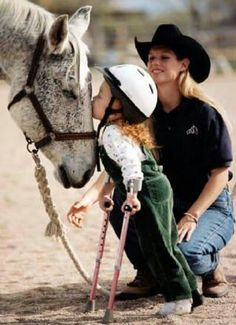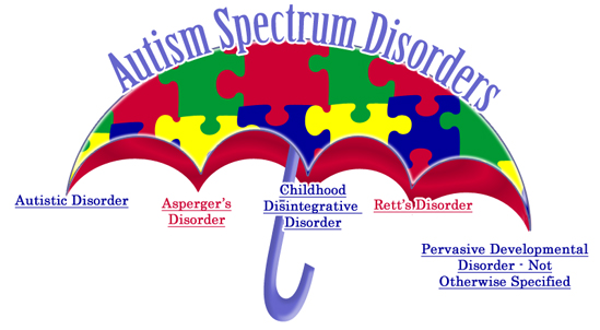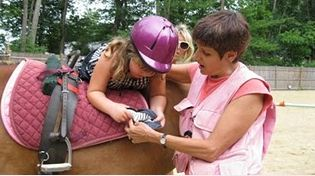Hippotherapy On Behaviour and Motor Skills In Children With Autism Spectrum Disorder

utism spectrum disorder is a developmental disability involving impaired social interaction, communication abilities along with restricted repetitive stereotyped behaviours and interest are present in the early developmental period of life i,e in the first 2yrs of life. Motor skills are impaired in individuals with autism spectrum disorder. Research has shown that motor coordination, postural control and learning of skills through imitation of the movements is limited and planning, learning new motor tasks are tends to get difficult for children with ASD which may result in early motor delays further contributing difficulty in acquiring social skills[2]. The prevalence of ASD according to CDC is 1 in 68 children affected are males face 4-5 times higher risk than females.
Autism spectrum disorder is classified into 3 sub categories named as:
- Autism disorder: The impairments seen in social and communication areas which are severe and sustained and present before the age of 3years.
- Asperger’s syndrome: The impairments can be severe and sustained in social impairments but not as severe as in communication area. Language develops at a typical age. Impairments are more apparent at preschool or school age. The IQ of these children will be in average or above average level.
- Pervasive developmental disorder-not otherwise specified: Also known as atypical autism. The individual’s show some characteristics of ASD that impact their daily life but do not meet the criteria for a diagnosis of Autism or Asperger’s syndrome.

Etiology of Autism spectrum disorders:
Factors include environmental, biologic and genetic causes.
- Genes are one of the risk factors which make a person likely to develop ASD
- Child having a sibling with ASD
- Genetic or chromosomal conditions such as fragile X syndrome
- Drugs such as valproic acid and thalidomide during pregnancy has higher risk
- Some evidence says the critical period for the development of ASD is before and immediately after birth
- Children born to older parents
The signs and symptoms of ASD are widely ranged presentations of symptoms from mild symptoms at one end of the spectrum and severe symptoms at the other end. Difficulties in social communication and interaction along with a tendency to engage in restricted, repetitive pattern of behavior are considered to be two core signs that indicates person may have ASD.
Signs and symptoms:
S/S related to social communication and interaction:-
- Avoiding eye contact and prefers staying alone
- Limited interest in peers & Limited social interaction
- Resistance to physical contact or touch
- Difficulty understanding others feelings, body language and tone of voice
- Repletion of words or phrases
S/S related to restricted, repetitive patterns of behavior:-
- Self-stimulation by repeated activities such as flapping hands/arms, spinning, rocking
- Obsessive interests such as lining up of toys etc
- Short attention span except for topics they prefer
- Aggression, self-injury or temper tantrums
- Unusual reactions to special senses
S/S related to movement:-
- Delayed in both large movement skills such as walking, jumping, skipping and use of hands for small movement skills such as buttoning shirt, drawing using crayon etc
- Difficultly imitating movements such as performing actions to songs
- Lack of coordination and poor balance
- Lack of planning skills
- Reduced eye-hand coordination
- Difficulty using sensory information for movement
Available literature gives a wide variety of interventions to treat ASD but there is no cure for ASD. The available treatments can help reducing symptoms and make a person function better.
Currently available interventions are:
- Behaviour and communication approaches such as Applied Behaviour Analysis (ABA), Occupation therapy, speech therapy and picture exchange communication system (PECS): It encourages positive behaviour and discourage snegative behaviour.
- Dietary approaches (vitamins and minerals supplements).
- Medication: To reduce the symptoms few medications such as risperidone, SSRIs, tricyclic’s, antipsychotics, stimulants, antianxiety drugs, and anticonvulsants have been used.
- Complementary and alternative medicine (CAM) includes chelation, biological or body based systems.
- Physical therapy interventions focuses on problems related to movement causing specific limitation and design activities that target those areas. Might include assisted movement, various forms of exercises, orthopaedic equipment, sensory integration therapy which uses swings trampolines and slides. In recent advances, hippotherapy treatment have been used to treat Autism spectrum disorders.
Hippo therapy is derived from the Greek word ‘hippos’ meaning horse. The term “hippotherapy” literally means treatment or therapy aided by horse. The first standardized hippo therapy curriculum was formulated in the late 1980’s. In Germany, hippotherapy was a treatment used by two physiotherapists, along with specially trained horse handler. The theories of physiotherapy practice were applied, with physiotherapist giving directions to the horse handler as to the gait, tempo, cadence and direction for horse to perform. The movement of horse was carefully modulated to influence neuromuscular changes in the patient.

Fig: Hippo therapy treatment
Hippo therapy, also known as therapeutic horseback riding, Equine facilitated therapy, or horse therapy is the passive use of physical movements of the horse for the treatment of patients with neurological or other disabilities. Equine assisted therapy is a treatment that uses multi-dimensional movement of horse. Treatment takes place in a controlled environment by specially trained therapist for using this treatment for children with movement dysfunction. Its proposed effects on body are seen in the respiratory, cognitive, sensory, vestibular, musculoskeletal, limbic, ocular systems. These changes may be a consequence of the postural and motor changes.
Hippo therapy works on the principle of dynamic systems theory along with theories of sensory integration and motor learning. The movement pattern of the horse is repetitive and rhythmical. The child experiences this pattern and begins to anticipate the movement with each step of the horse and thus the child learns to compensate the movement which reduces the displacement of his or her COG. The primary horse movements have been found to correlate with the automatic physical reaction of the rider in the 3 components of movement of human body i.e. static or dynamic, weight shift and rotational component. During the horse’s slow walk, all 3 components occur within the rider’s trunk and pelvis simultaneously. Therefore there is facilitation of the automatic postural responses and stimulation of trunk muscles, also increase in sensory input in various systems of body such as vestibular, proprioceptive, tactile, cognition and motor.
Few recent studies suggest that hippotherapy shown to improve balance, strength, motor coordination along with promoting language, sensory regulation as well as improving social skills in children with ASD. In a study conducted by Bass, Duchowny and Libre in 2009 suggested a significant improvement in several social skills after 12 weeks of physical therapy in a patient with ASD.
CONCLUSION:
The present literature review reflects that hippotherapy improves behaviour and motor skills. The present study also indicates that hippotherapy has beneficial effects on children with autism spectrum disorder. The hippotherapy shown to improve social skills, language, motor coordination, breathing and other symptoms patients may present with. Also, the excitement of riding encourages speech when child wants to communicate with the therapist and horses.
The other benefits of hippotherapy seen in this autism spectrum disorder population are :-
- Relaxing tight muscles & increases strength
- Improving fine motor coordination
- Improved posture and flexibility
- Gaining self-control & confidence
- Improvement in concentration
